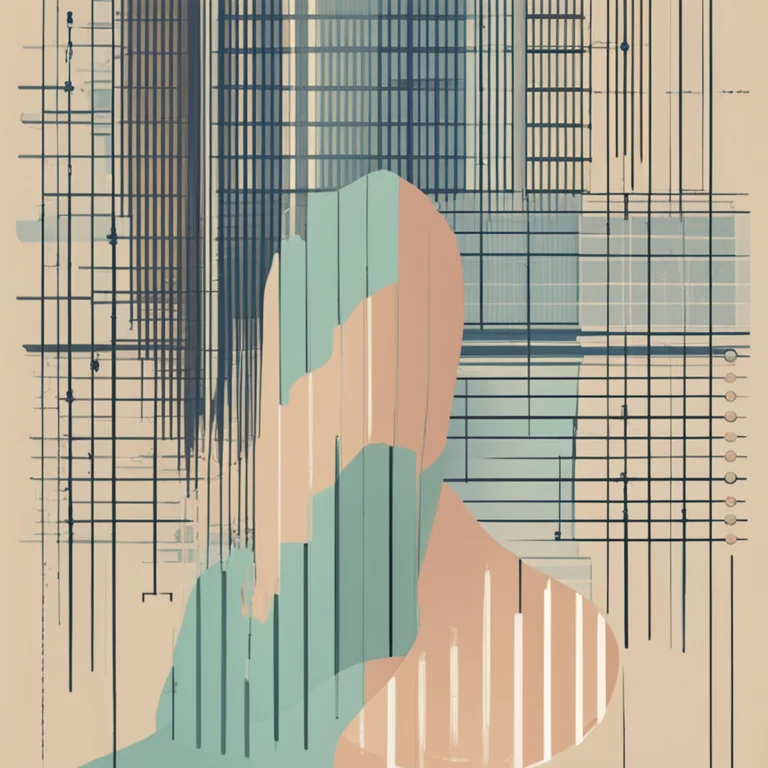
The Science Behind Palm Line Formation
Delve into the fascinating world of palmistry by exploring the science of palm line formation and what influences their unique patterns.
article by Nora Pennington
The Genesis of Palm Lines
Palm lines, those unique creases on the inner surface of our hands, begin to form even before we are born. By the end of the second month of gestation, the basic lines are already taking shape. These lines, which will continue to develop and deepen throughout a person's life, are not simply random creases, but are influenced by genetic, environmental, and even neurological factors. Their development is closely tied to the fetal hand's own movements in the womb, as the skin starts to fold in areas of natural bending, thereby setting the groundwork for the lines we observe later in life.

The Role of Genetics
While each person's palm lines are unique, there are patterns that can be traced within families, suggesting a hereditary component in their formation. Genetics can dictate the overall flexibility of the skin and the propensity for certain types of creases to form. This means that, to some extent, your palm lines may be a reflection of inherited traits from your ancestors. Interestingly, identical twins, who share the same genetic makeup, often have very similar palm patterns, further underscoring the role of genetics in palm line formation.

Environmental Influences
Environmental factors also play a part in how palm lines develop. Conditions in the womb, such as the amount of amniotic fluid, can impact the amount of space a fetus has to move. This, in turn, affects the folding of the skin and the resulting lines. After birth, the way a person uses their hands can also subtly change and mold the lines, causing them to deepen or change direction over time. The specific actions and movements we repeat daily can leave their mark on the canvas of our palms.

Neurological Connections
Our palm lines are also connected to our central nervous system. The brain sends signals through a complex network of nerves to the hands, controlling movement. These movements contribute to the deepening of the creases over time. Areas used more frequently, such as the pads of the fingers and thumbs, exhibit more prominent lines. In some cases, changes in neurological function due to health conditions or injuries can lead to alterations in palm lines, indicating their dynamic nature.

The Evolution of Palmistry
The interpretation of palm lines, or palmistry, has been practiced for millennia across various cultures. However, modern palmistry often combines traditional wisdom with insights from psychology and forensic sciences. As we advance into 2024, palmistry is evolving with a greater emphasis on objective analysis and how it might reflect a person's personality or tendencies, as opposed to making definitive predictions about one's fate or future.
Scientific Perspective
While palmistry is largely considered a pseudoscience by the scientific community, there is a mutual acknowledgment of the remarkable complexity within our palms. Researchers in fields such as dermatoglyphics study fingerprints and palm patterns to understand their connections to genetic conditions or predispositions. This scientific interest underscores that while the spiritual or predictive aspects of palm lines might be debatable, their formation is undeniably intricate and linked to various facets of our biological existence.
Published: 1/10/2024
Modified: 1/10/2024
More predictions
Come back here soon to learn more about yourself and your future


The Intricacies of Palm Reading: A Guide to Palmistry
Delve into the ancient art of palm reading with our comprehensive guide that reveals the secrets hidden in the lines of your hands.


The Basics of Palmistry: Learn to Read Palms
Master palmistry basics with this guide on how to interpret lines and shapes on the palm for insights into personality and destiny.


Palmistry in Flux: The Nature of Palm Lines
Delve into the compelling world of palmistry and discover how your palm lines may change over time, reflecting personal growth and life shifts.